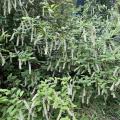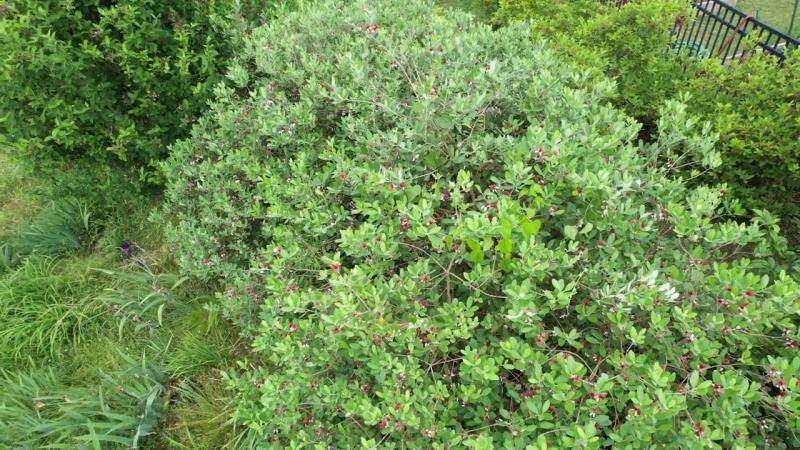Perennial Propagation
Though most perennials may take a couple of years to flower from seed, many are as easily started as annuals. The quickest way to have blooming plants, however, is by vegetative propagation, such as by dividing old plants or rooting stem cuttings. Plants produced vegetatively have all of the traits of the "mother" plant. Propagation by division may seem difficult at first, but most gardeners find that dividing crowns and roots and separating bulbs takes very little experience and can be mastered quickly. Try dividing monkey grass for experience; then move on to daylilies, and before long you will have the hang of it.
Perennial plants with shallow roots are easily pulled apart by hand. Long fibrous roots can be pulled apart with a hand fork. Thickly intertwined roots may need more forceful separation or cutting with digging forks. Replant only those segments with strong roots and a few intact leaves or crowns.
In general, it is best to divide perennials during their dormant or "off" season; divide spring bloomers in the fall and fall bloomers in spring. Some perennials may need dividing every 3 or 4 years, or they will slowly crowd themselves into clumps of nonflowering leaves and roots.
Many perennial plants may be propagated from stem cuttings, which does not disturb the plant's roots. Take stem cuttings during the spring or early summer, choosing stems that are mature and firm but not yet hardened and woody. Cut off 4- to 6-inch segments using a sharp knife or shears, and pinch off the succulent tip and any flower buds to force the cuttings to concentrate their energy on producing roots. Remove the lower leaves that will be below the surface of the rooting medium, but leave a few leaves to provide a source of energy for root initiation and growth.
Because of disease or weather conditions, cuttings often will not root directly in garden soils. They may be easily started in a pot containing a porous, well-drained rooting medium, such as a 1:1 mixture of perlite and peat moss. Coarse sand and vermiculite are also used as rooting soils. These mixtures will hold moisture and yet allow drainage for air circulation. Root-stimulating compounds, including those that contain fungicides, are available at most garden centers. Using a blunt stick, pencil, or finger, open a hole in the rooting medium and insert the treated cutting. Firm the medium around the cutting and water in well.
Many commercial growers use a mist bed to keep cuttings from wilting, but this is usually not feasible on a small scale. You may easily construct a humidity tent from plastic film loosely draped over a frame covering the cuttings. Place the tent in bright light, but prevent overheating by making sure the tent is not located in direct sunshine. Keep the plastic loose to allow air circulation. Avoid direct contact between the leaves and the plastic. The tent will serve as a tiny greenhouse and will maintain a good rooting environment with daily light watering. Rooting often occurs within 3 or 4 weeks. By the time new leaves begin to appear on cuttings, roots are usually formed. Remove the plastic tent and water regularly until plants are firmly established.
Transplant newly rooted plants into prepared beds or pots and place in a bright, protected area until you are ready to set them into your garden or share them with others.
Publications
News
I recently had the pleasure of visiting the backyard bluff gardens of Paul and Donna Ingram, perched high above the winding Mississippi River in Vicksburg, Mississippi.
There are a few plants that bring both beauty and function to the landscape, and pineapple guava is one of those rare gems that does it all.
During a recent visit to Paul and Donna Ingram’s garden in Vicksburg, Mississippi, I was inspired by how beautifully they’ve showcased this remarkable plant.
Deciduous plants are those that shed their foliage at the end of the growing season. I recently had the pleasure of seeing the beautiful collection that Warren County Master Gardener Beattie Williams has curated.
While there were several standout selections in her garden, one that immediately caught my eye was Virginia sweetspire. This is a native shrub that offers something beautiful for every season.









